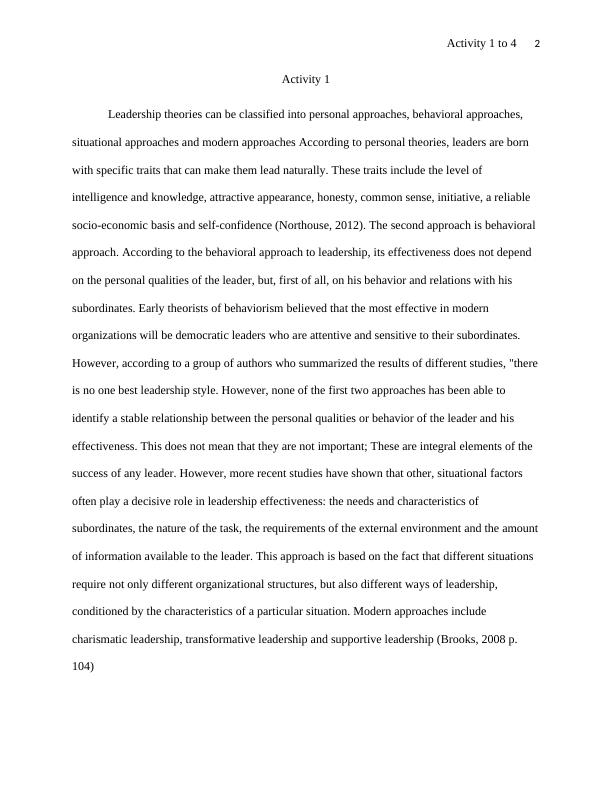Leadership Theories, Management Styles, Motivation and Decision-Making Approaches
10 Pages2508 Words91 Views
Added on 2023-06-07
About This Document
This article discusses various leadership theories, including personal, behavioral, situational, and modern approaches. It also covers different management styles, such as authoritarian, democratic, and liberal, and the importance of motivation in the workplace. Additionally, the article explores the significance of organizational culture and teamwork in improving productivity and decision-making approaches.
Leadership Theories, Management Styles, Motivation and Decision-Making Approaches
Added on 2023-06-07
ShareRelated Documents
End of preview
Want to access all the pages? Upload your documents or become a member.
Essay | Self Reflection on Leadership Development
|12
|2603
|1676
Motivation and Leadership Styles in the Workplace
|10
|2847
|279
Leadership in Business
|5
|1250
|72
Leadership Essay 2022
|7
|2120
|43
Authoritative Leadership Assignment 2022
|7
|2272
|16
Leadership-Self Assessment: Autocratic Leadership Style
|6
|1225
|322



